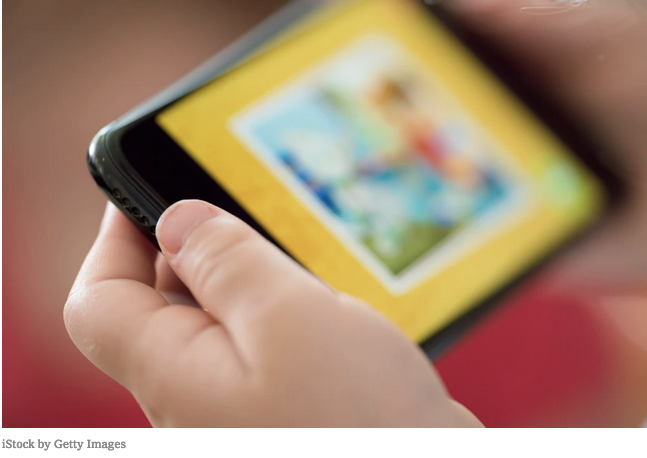A new study using sophisticated brain scans found an association between screen use and the development of young children’s brains, especially in areas related to language development, reinforcing the messages about minimizing screen time for preschoolers.
Let’s start with full disclosure: I know some of the authors of the research, which was published Monday in JAMA Pediatrics. The lead author is Dr. John S. Hutton, the director of the Reading and Literacy Discovery Center at Cincinnati Children’s Hospital. I wrote about some of his research a few years ago, when he looked at how young children’s brains react to hearing stories, and have even collaborated with him in writing about children and reading, one of my favorite topics (the world of pediatricians obsessed with picture books is small and closely, well, networked).
I am the national medical director of Reach Out and Read, the national organization that works through pediatric primary care to promote parents reading aloud with young children, and we will be celebrating our 30th anniversary this week in Boston. With that in mind, I’m especially interested in this study on how young children’s brains are shaped by the environment in which they grow.
Bedtime Stories for Young Brains
Children whose parents reported more reading at home and more books in the home showed significantly greater activation of brain areas in a region of the left hemisphere called the parietal-temporal-occipital association cortex. This brain area is “a watershed region, all about multisensory integration, integrating sound and then visual stimulation,” said the lead author, Dr. John S. Hutton, a clinical research fellow at Cincinnati Children’s Hospital Medical Center.
This region of the brain is known to be very active when older children read to themselves, but Dr. Hutton notes that it also lights up when younger children are hearing stories. What was especially novel was that children who were exposed to more books and home reading showed significantly more activity in the areas of the brain that process visual association, even though the child was in the scanner just listening to a story and could not see any pictures.
“When kids are hearing stories, they’re imagining in their mind’s eye when they hear the story,” said Dr. Hutton. “For example, ‘The frog jumped over the log.’ I’ve seen a frog before, I’ve seen a log before, what does that look like?”
Reach Out and Read
Children and Media Tips from the American Academy of Pediatrics




